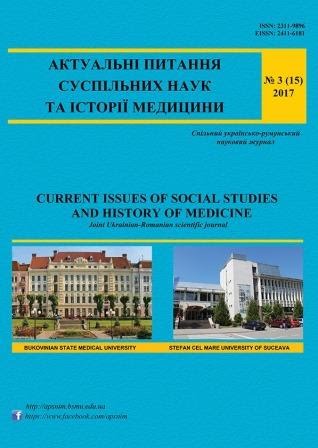СЕМАНТИКА ПРИВІТАННЯ ТА ЇЇ СИНТАКСИЧНА РЕАЛІЗАЦІЯ
SEMANTICS OF GREETINGS AND ITS SYNTAX REALISATION
Author(s): Oksana MelnychukSubject(s): Syntax, Semantics, Eastern Slavic Languages, Philology, Phraseology, Stylistics
Published by: Видавництво ВДНЗ України « Буковинський державний медичний університет »
Keywords: speech etiquette; etiquette greeting; nominal etiquette phrases; verbal etiquette phrases; one-member sentences; two-member sentences;
Summary/Abstract: The purpose of the article is to study and systematize formal -grammatical features of etiquette greetings and to implement their syntactic typology. The relevance of the work is determined by the importance of the subject of study and lack of clear etiquette greetings’ syntactic typology in modern Ukrainian linguistics. The scientific novelty of the study is the improvement of syntactic structural schemes typology of etiquette greetings. Research methods: the historical, logical, structural, cognitive, scientific methods were used in the work. Conclusions. The implemented syntactic typology of etiquette greetings confirms the diversity of their structure. The most productive forms of their implementation are nominative one-member sentences and verbal (one-member as well as two-member) ones. According to the semantics and communicative purpose, we can identify two types of nominal greetings structures: nominative narrative (declarative) sentences) and nominative imperative-optative ones. Nominative imperative – optative greetings are full of emotional content. Nominative and imperative – optative meanings are combined in their semantics e.g. “Myr domu Vashomy!” (Peace to your house!), “Khl’ib ta sil’!” (Bread and salt!). In the fixed one-member verbal sentences the main member is performed by a certain conjugation e.g. “Vinshuiu!” (Congratulations!)", “Biu cholom” (I bow to you), “Bozhe pomozhy” (God, help (us)). Fixed two-member etiquette greetings have different stylistic tinge of “politeness”, so they are not used in all the language genres. They are mainly used in informal and belletristic language styles.
Journal: Актуальні питання суспільних наук та історії медицини
- Issue Year: 2021
- Issue No: 1
- Page Range: 13-18
- Page Count: 6
- Language: Ukrainian

